
 Published on and written by Cyril Jarnias
Published on and written by Cyril Jarnias
Norway, a Scandinavian country renowned for its majestic fjords and exceptional quality of life, is attracting an increasing number of international real estate investors. With a stable economy and a dynamic property market, this Nordic nation offers numerous opportunities for those looking to diversify their real estate portfolio. In this article, we will explore the benefits of investing in Norwegian real estate, market trends, the most attractive areas, as well as practical aspects for foreign investors.
Discover our articles on real estate investment in Norway:
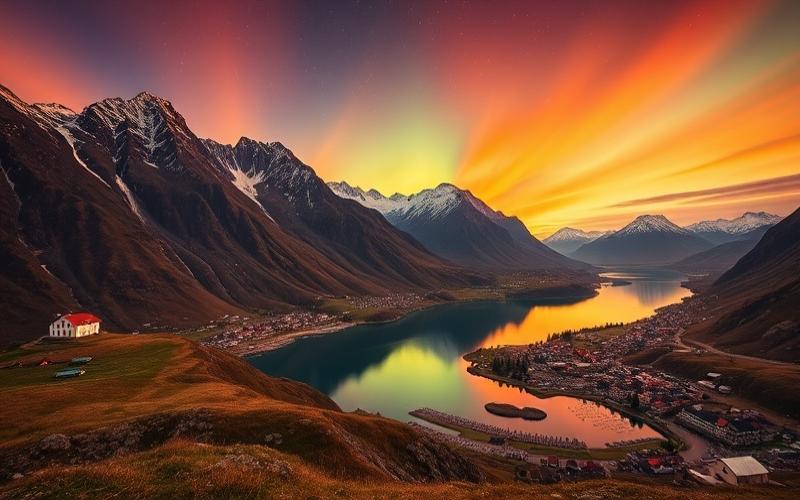

Norway, with its spectacular coastlines, majestic fjords, and breathtaking landscapes, is a premier destination for those dreaming of owning waterfront [...]
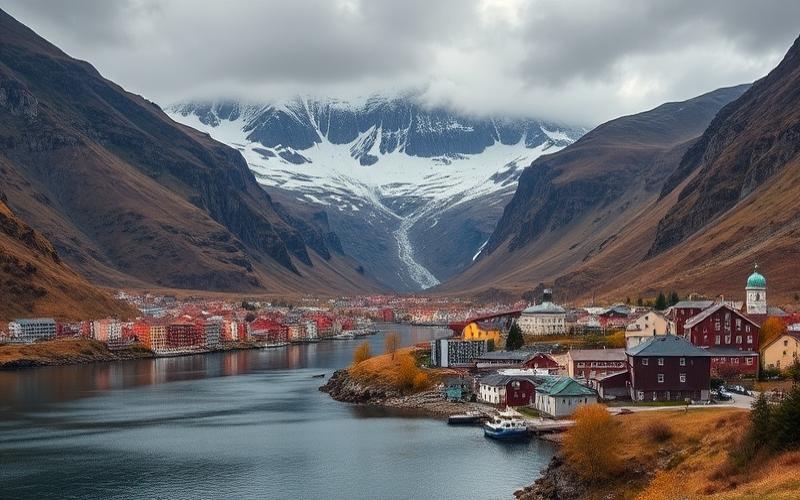

The Norwegian real estate market presents a contrasting picture, blending economic stability with unique challenges. Let’s dive into the current [...]
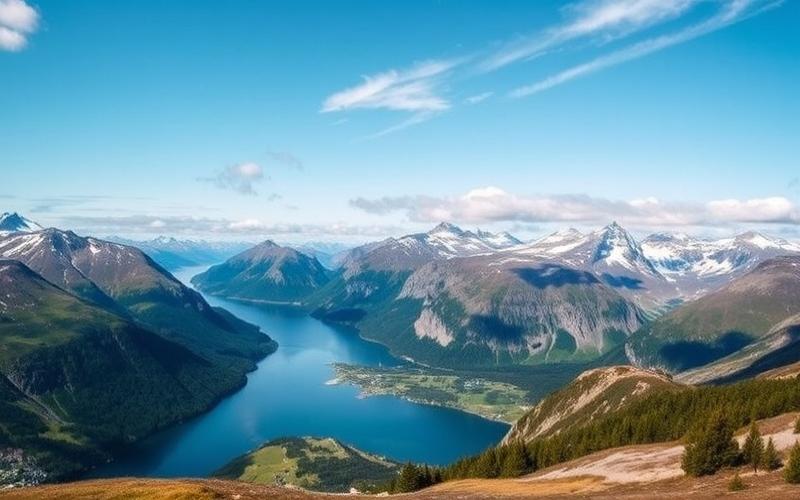

Norway, with its breathtaking landscapes and enviable quality of life, is attracting an increasing number of foreign investors to its [...]
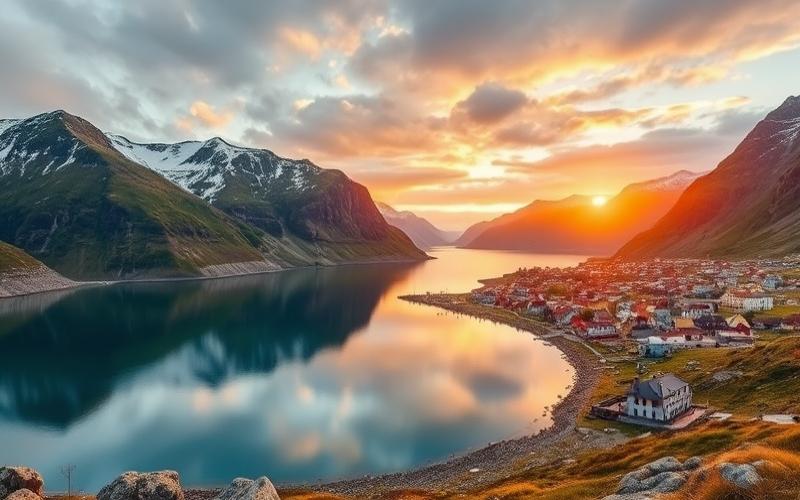

Norway, with its breathtaking landscapes and stable economy, is attracting an increasing number of foreign real estate investors. Whether you [...]


Norway, with its breathtaking landscapes and growing tourist appeal, offers considerable potential for seasonal rentals. Whether you already own property [...]
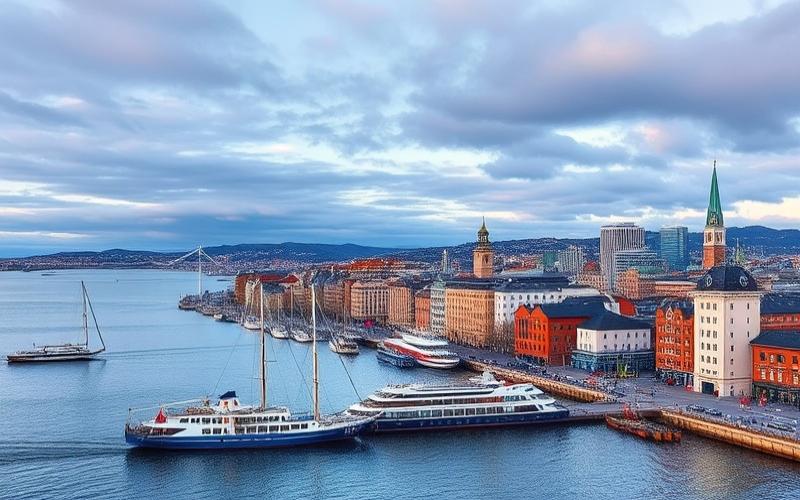

Norway is poised to experience a wave of major urban developments that will significantly transform its real estate landscape in [...]
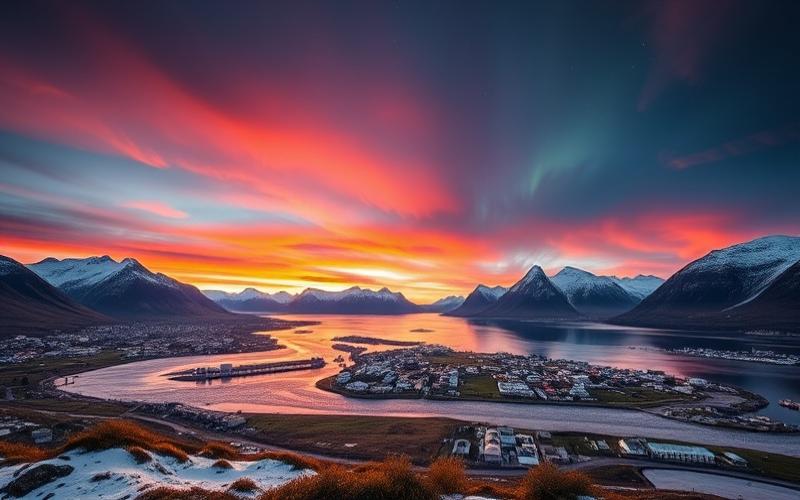

Purchasing real estate in Norway can be an interesting investment, whether for personal use or as a rental property. However, [...]
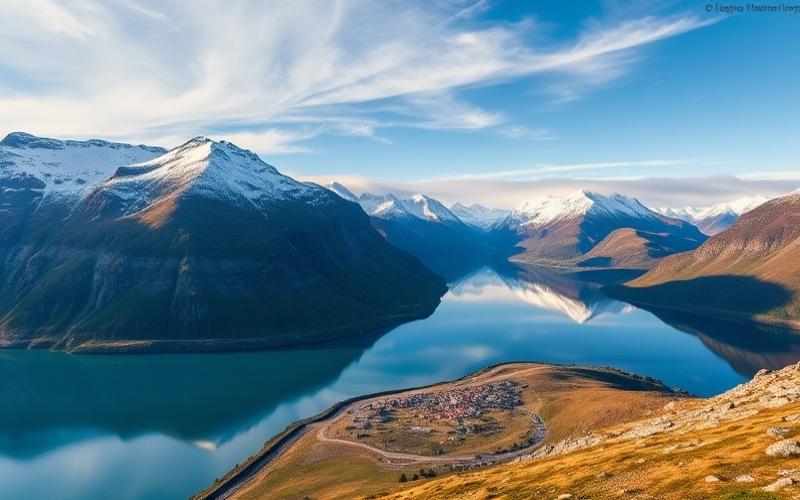

Norway, with its majestic fjords and prosperous economy, is attracting an increasing number of international real estate investors. Beyond its [...]
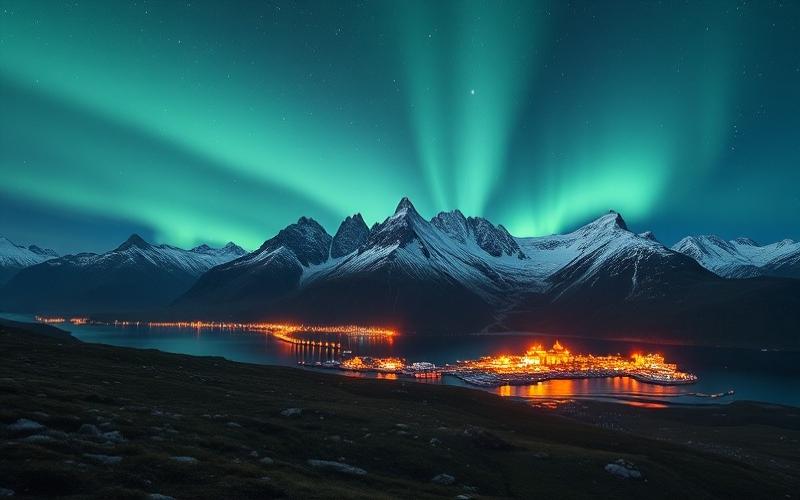

Here is a detailed article about common mistakes when purchasing real estate in Norway, with engaging sections: Buying property in [...]
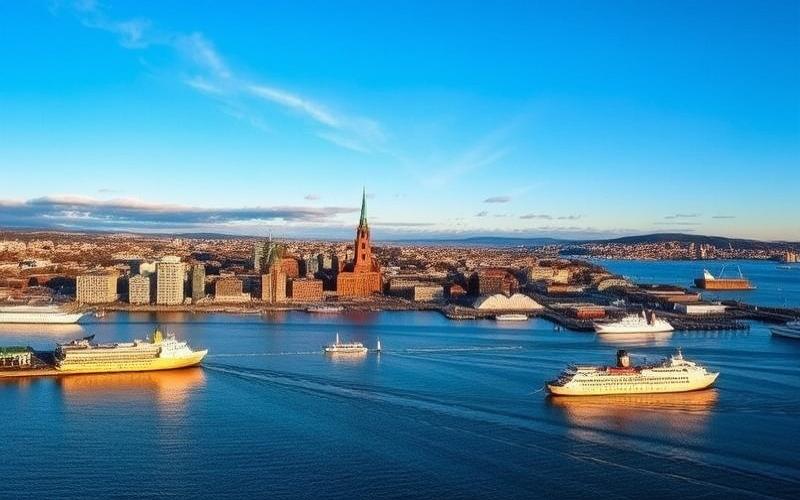

Norway, with its majestic fjords, snow-capped mountains, and vibrant cities, is attracting an increasing number of international real estate investors. [...]


Norway, with its breathtaking landscapes and exceptional quality of life, is attracting more and more international real estate investors. Whether [...]
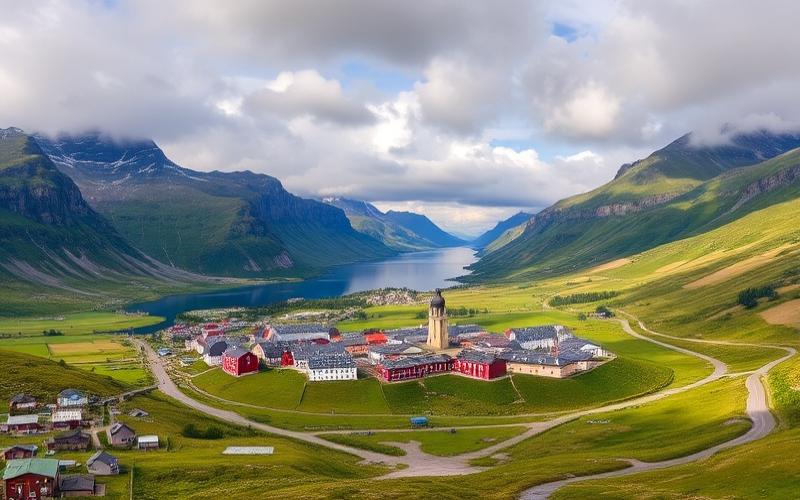

Commercial real estate in Norway offers particularly attractive investment opportunities for savvy investors. As a Scandinavian country renowned for its [...]
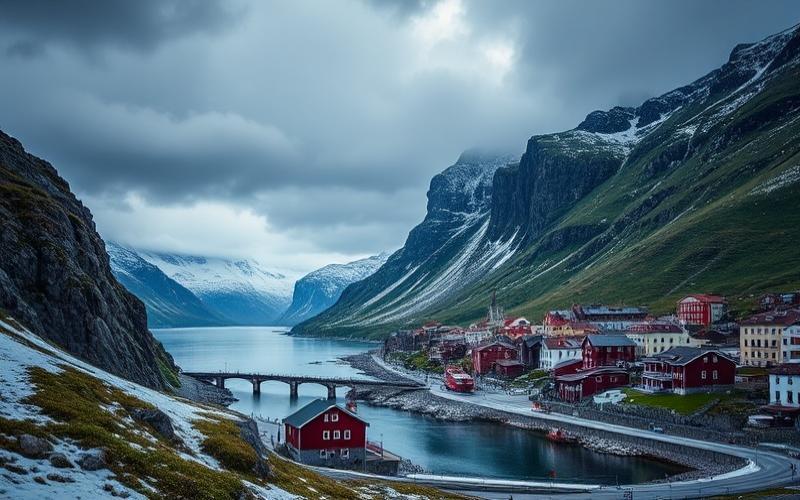

The Norwegian real estate market is known for its dynamism, but selling a property quickly requires a strategic and well-prepared [...]
Norway: A Haven of Stability for Real Estate Investors
Investing in Norwegian real estate offers numerous advantages that make it a prime destination for savvy investors. Here are the main reasons why the Norwegian property market is so attractive:
A robust and stable economy: Norway benefits from a strong economy, supported by its abundant natural resources, particularly oil and gas. This economic stability is reflected in the real estate market, offering appreciable security for investors.
A consistently growing real estate market: For several years, property prices in Norway have seen steady increases, offering interesting capital appreciation prospects in the medium and long term.
Sustained rental demand: Norway attracts many expatriates and international students, generating strong rental demand, particularly in major cities like Oslo and Bergen.
A favorable legal framework: The country has a transparent and efficient legal system, offering strong protection for real estate investors.
Exceptional quality of life: Norway is regularly ranked among the countries with the best quality of life in the world, making it an attractive destination for tenants and potential buyers.
Good to know:
Norway’s economic and political stability, combined with a growing real estate market, makes this Scandinavian country a prime destination for real estate investors seeking to diversify their portfolio with safe and profitable assets.
The Norwegian Real Estate Market: Consistently Rising Prices
The Norwegian real estate market is characterized by a long-term upward trend, despite some short-term fluctuations. Here is an overview of current prices and market trends:
Average prices in major cities: In Oslo, the capital, the average price per square meter for an apartment is around 80,000 Norwegian kroner (NOK), or approximately 7,000 euros. In other major cities like Bergen or Trondheim, prices are slightly lower, averaging about 60,000 NOK/m² (5,200 euros).
Price evolution: Over the past ten years, real estate prices in Norway have seen an average annual increase of about 5%, with variations depending on regions and property types.
Factors influencing prices: The price increase is mainly due to strong demand, particularly in urban areas, combined with limited supply. Historically low interest rates have also contributed to stimulating the market.
Future prospects: Although some experts predict a slowdown in price growth, the Norwegian real estate market is expected to remain dynamic in the coming years, supported by a strong economy and steady demand.
It is important to note that prices can vary considerably depending on the exact location, size, and condition of the property. Central neighborhoods in major cities, especially in Oslo, typically have the highest prices.
Good to know:
Despite relatively high prices, the Norwegian real estate market offers interesting long-term capital appreciation prospects, particularly in expanding urban areas.
Diversity of Real Estate Properties: From City Apartments to Mountain Cabins
The Norwegian real estate market offers a wide variety of properties, suitable for different types of investments. Here is an overview of the main types of available housing, with price examples:
City apartments: Highly sought after in urban centers, apartments represent a popular investment option. In Oslo, a 50 m² apartment in a central neighborhood can cost about 4 million NOK (350,000 euros).
Single-family homes: In suburbs and small towns, single-family homes are common. The price of a 120 m² house in the outskirts of Oslo can be around 6 million NOK (520,000 euros).
Mountain cabins: “Hytter” (cabins) are very popular in Norway for vacations. An 80 m² cabin in a renowned ski resort like Trysil can cost about 3.5 million NOK (300,000 euros).
Cooperative properties: This type of ownership, where shares in a housing cooperative are purchased, is common in Norway. Prices are generally lower than those of traditional apartments but involve higher monthly fees.
New properties: Many construction projects offer investment opportunities in modern and energy-efficient homes. In Bergen, a new 70 m² apartment can cost about 4.5 million NOK (390,000 euros).
It is important to note that these prices are indicative and can vary considerably depending on the exact location, construction quality, and amenities.
Good to know:
The diversity of real estate properties available in Norway allows investors to choose properties suited to their goals, whether for long-term rental, seasonal rental, or resale after capital appreciation.
The Most Promising Investment Areas: From Fjords to Metropolises
Norway offers numerous real estate investment opportunities, with attractive areas spread throughout the country. Here is an overview of the most promising regions for investors:
Oslo and its region: The Norwegian capital remains the country’s most dynamic real estate market. Central neighborhoods like Grünerløkka, Frogner, and Majorstuen are particularly sought after, offering high rental yield potential and long-term capital appreciation.
Bergen: The country’s second-largest city, Bergen attracts many investors thanks to its dynamic job market and tourist appeal. The neighborhoods of Sandviken and Nordnes are particularly in demand.
Trondheim: An important university city, Trondheim offers interesting opportunities for rental investment, especially in neighborhoods near the campus like Moholt and Gløshaugen.
Stavanger: The center of Norway’s oil industry, Stavanger attracts many expatriates, creating sustained demand for quality housing, particularly in residential areas like Eiganes and Storhaug.
Tourist areas: Tourist regions like the Lofoten Islands, Tromsø, or ski resorts like Trysil offer opportunities for investment in properties intended for seasonal rental.
Developing cities: Cities like Bodø, Ålesund, or Kristiansand are experiencing rapid growth and can offer investment opportunities at more affordable prices than in major metropolises.
It is important to note that each region has its own market dynamics and opportunities can vary depending on local economic and demographic developments.
Good to know:
Although major cities like Oslo and Bergen offer the most liquid and dynamic markets, investors seeking higher returns can find interesting opportunities in growing secondary cities.
Norway Compared to Its Neighbors: A Competitive Real Estate Market
To better understand the attractiveness of the Norwegian real estate market, it is interesting to compare it with other popular Nordic destinations. Here is a comparative analysis with other Nordic destinations:
Norway vs Sweden: – Prices: Real estate prices in Norway are generally higher than in Sweden, especially in major cities. – Rental yield: Norway offers slightly higher rental yields, particularly in Oslo compared to Stockholm. – Market growth: Both countries have experienced sustained price growth in recent years, but Norway tends to show more stable growth.
Norway vs Denmark: – Regulation: The Danish real estate market is more regulated, with restrictions on non-residents purchasing second homes. – Cost of living: Although real estate prices are comparable in the capitals, the overall cost of living is generally higher in Norway. – Growth potential: Norway potentially offers better long-term growth potential, thanks to its diversified economy and natural resources.
Norway vs Finland: – Job market: Norway generally offers better employment opportunities and higher salaries, which supports real estate demand. – Accessibility: The Finnish market is often considered more accessible to foreign investors, with lower average prices. – Economic stability: Although both countries are economically stable, Norway benefits from greater wealth due to its oil resources.
Norway vs Iceland: – Market size: The Norwegian real estate market is much larger and more diversified than Iceland’s. – Volatility: The Icelandic market tends to be more volatile, while the Norwegian market offers greater stability. – Tourist appeal: Although both countries attract many tourists, Norway offers a broader market for investments in tourist real estate.
Good to know:
Compared to its Nordic neighbors, Norway stands out with a real estate market offering a good balance between stability, growth potential, and attractive returns, especially for investors seeking quality assets in a robust economy.
Investing as a Foreigner: An Accessible and Transparent Process
Unlike some countries that impose strict restrictions on foreign buyers, Norway offers a relatively open and transparent framework for international real estate investment. Here are the main points foreign investors should know:
Property rights: Foreigners can generally purchase real estate in Norway without major restrictions. There is no legal distinction between Norwegian and foreign buyers for most types of properties.
Purchase process: The purchase process is similar for foreigners and locals. It typically involves the following steps: 1. Property search and viewings 2. Negotiation and purchase offer 3. Signing a preliminary contract 4. Due diligence and obtaining financing if necessary 5. Signing the final deed of sale 6. Registering the property with the Norwegian land registry
Financing: Norwegian banks can grant mortgages to foreign buyers, although conditions may be stricter than for residents. It is generally recommended to have a personal contribution of at least 15-25% of the purchase price.
Taxation: Foreign owners are subject to the same tax rules as Norwegian owners, including tax on rental income and property tax in some municipalities.
Residence: Purchasing real estate in Norway does not automatically grant the right of residence. EU/EEA nationals benefit from more flexible residence rules, while other nationalities must obtain appropriate visas or permits.
Professional assistance: It is highly recommended to use a real estate lawyer and a local real estate agent to navigate the purchase process and ensure compliance with all legal requirements.
Language: Although many documents may be available in English, some contracts and official documents may be in Norwegian. It is important to ensure a good understanding of all documents before signing them.
Good to know:
Although the real estate purchase process in Norway is relatively accessible to foreigners, it is crucial to research the legal and tax aspects specific to your personal situation before investing.
Rental Profitability in Norway: Attractive Returns in a Stable Market
Rental investment in Norway can offer interesting returns, especially in major cities where rental demand is strong. Here is an overview of the rental profitability one can expect in Norway, with concrete examples:
Average yields: Gross rental yields in Norway generally range between 3% and 6%, with significant differences depending on location and property type.
Example in Oslo: – Property: 50 m² apartment in the Grünerløkka neighborhood – Purchase price: 4,000,000 NOK (approximately 350,000 euros) – Monthly rent: 15,000 NOK (approximately 1,300 euros) – Annual gross rental yield: 4.5%
Example in Bergen: – Property: 120 m² house in the Fana suburb – Purchase price: 5,500,000 NOK (approximately 480,000 euros) – Monthly rent: 20,000 NOK (approximately 1,750 euros) – Annual gross rental yield: 4.4%
Example of seasonal rental in the Lofoten Islands: – Property: 80 m² cabin with fjord views – Purchase price: 3,000,000 NOK (approximately 260,000 euros) – Annual rental income (20 weeks occupancy): 300,000 NOK (approximately 26,000 euros) – Annual gross rental yield: 10% (note higher management costs for seasonal rental)
Factors influencing profitability: – Location: Central areas in major cities generally offer higher rents but also higher purchase prices. – Property type: Small apartments tend to offer better yields than large houses. – Property condition: Renovated or new properties can justify higher rents. – Property management: Management costs can reduce profitability, especially for seasonal rentals.
Long-term prospects: In addition to rental income, investors can also benefit from long-term capital appreciation, as real estate prices in Norway tend to increase steadily over the years.
Good to know:
Although rental yields in Norway may seem modest compared to some emerging markets, they offer appreciable stability and security in a strong economic context. The combination of regular rental income and potential long-term capital gains makes real estate investment in Norway particularly attractive for investors seeking a balance between return and security.
Conclusion: Norway, a Wise Choice for Diversifying Your Real Estate Portfolio
Real estate investment in Norway presents many advantages for international investors seeking stability and long-term growth potential. With its robust economy, dynamic real estate market, and transparent legal framework, Norway offers an environment conducive to secure real estate investment.
Major cities like Oslo, Bergen, and Trondheim offer interesting opportunities, both for rental investment and long-term capital appreciation. Tourist areas, on the other hand, can offer attractive returns for seasonal rentals.
Although real estate prices in Norway are relatively high compared to some European markets, they are offset by market stability, exceptional quality of life, and long-term growth prospects.
For foreign investors, the purchase process is relatively simple and transparent, although it is recommended to work with local professionals to navigate the specifics of the Norwegian market.
In conclusion, real estate investment in Norway represents an excellent diversification opportunity for investors looking to balance their portfolio with quality assets in a stable and prosperous economy.
Disclaimer: The information provided on this website is for informational purposes only and does not constitute financial, legal, or professional advice. We encourage you to consult qualified experts before making any investment, real estate, or expatriation decisions. Although we strive to maintain up-to-date and accurate information, we do not guarantee the completeness, accuracy, or timeliness of the proposed content. As investment and expatriation involve risks, we disclaim any liability for potential losses or damages arising from the use of this site. Your use of this site confirms your acceptance of these terms and your understanding of the associated risks.



